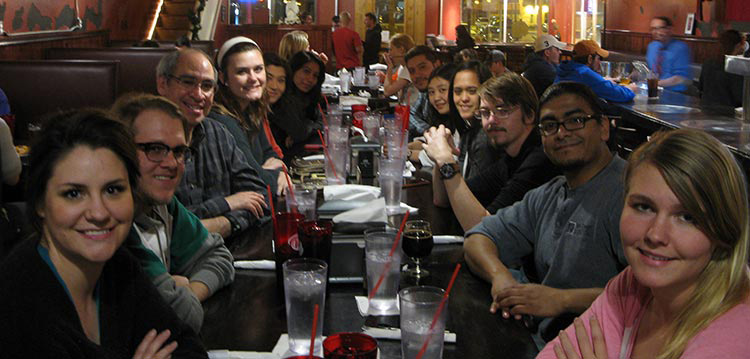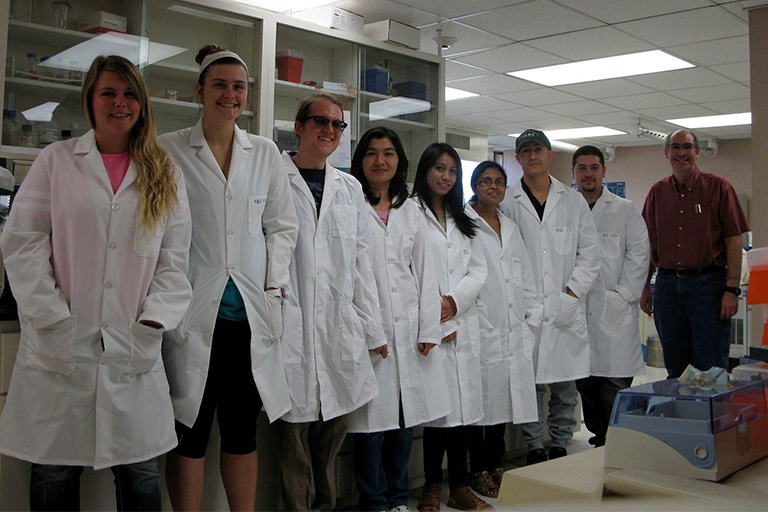Dr. Manuel Varela, professor of biology at Eastern New Mexico University, and several ENMU students had their peer-reviewed review article published in the December 2018 issue of "Current Trends in Microbiology." The article was titled "Bioactive agents as modulators of multidrug efflux pumps of the major facilitator superfamily in key bacterial pathogens."
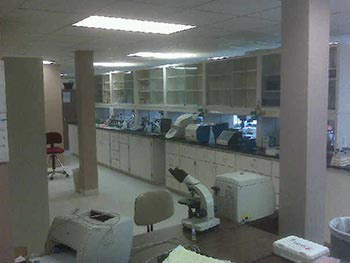
The student authors from ENMU include Ugina Shrestha, Jones Adeji, Krista Jones, Alberto Hernandez and Leslie Sanford. Manjusha Lekshmi and Sanath Kumar from Post Harvest Technology at the Central Institute of Fisheries Education in India also served as authors.
Dr. Varela discussed his work on the article:
What was the focus of your review article? How did you decide on this topic?
The primary focuses of the article were to provide a review of some important microbes that cause infectious diseases in humans and to provide some key developments towards inhibiting these microbes.
We became interested in the topic of infectious disease because of their seemingly widespread occurrences on a global scale. We had been aware that one of the main reasons for their alarming numbers in conferring disease was their bacterial resistance to medicines, like antibiotics, and other anti-bacterial agents.
We also knew of a specialized type of protein, called a transporter, that was involved in providing bacterial resistance to antimicrobial chemicals. These medicine-resistance conferring transporters are referred to as multidrug efflux pumps. These antimicrobial transporters actively export medicines from the insides of the disease-causing bacteria, making them resistant to such medicines. It seems reasonable to inhibit these antimicrobial export pumps in order to foster conditions that prevent resistance and thereby restore the efficacy of medicines for infectious disease treatment.
We felt that natural products, called bioactive agents, would be good candidates for presentation. The review article summarizes some of the historical and recent inhibitors, called modulators, of these bacterial multidrug efflux pumps.
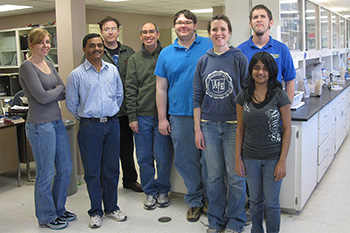
What were some of the highlights of working on this article?
In our published review article, we presented some key information about certain microbes, called bacterial pathogens, which cause infectious disease.The pathogens we reviewed are Salmonella enterica (which causes salmonellosis such as typhoid fever), Vibrio cholerae (causes cholera), Staphylococcus aureus (causes a variety of community- and healthcare-acquired infections), Escherichia coli (gastrointestinal and kidney infections), Enterobacter (healthcare-acquired infection), and Neisseria (gonorrhea, meningitis, and septicemia). We summarized their bacteriology, virulence factors, symptomologies of the various diseases, treatment avenues, and some key multidrug efflux pumps harbored by each of the pathogens.
Next, we considered the various so-called modulators of bacterial multidrug resistances. We were particularly interested in reviewing studies of naturally occurring efflux modulators, which we felt would be relatively non-toxic, like plant-derived agents, such as food spices. Lastly, we provided some important strategic approaches for future work in developing new resistance modulators.
How did you go about creating this article and getting it published?
My co-author students and I choose various components of the paper. Each student wrote about one of the bacterial pathogens, and I chose to focus on the modulators and future work. We sent the manuscript to the journal, and the editor, in turn, sent it to three anonymous expert referees. They each compiled a report, providing a variety of criticisms and suggestions for revision.
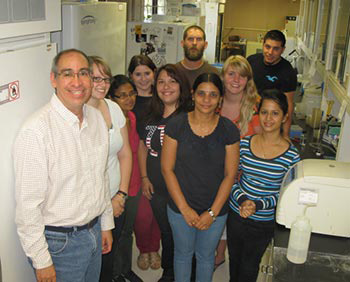
Then, we modified the manuscript according to each of the points raised by the reviewers and sent it back to the editor. At that point, we're not exactly sure whether the editor sent our revision back to the original or new reviewers, or simply compared our two submissions, but after several weeks, the editor said it had been accepted for publication and that the publication would appear at the end of the year. We were quite pleased because it was a monumental undertaking to write and revise the paper.
What does it mean to you to have this article published?
To me, it feels like we've made a long-lasting contribution to the scientific world. We understand that scientific journals have been and will continue to be archived essentially for perhaps even a millennia. It's sort of neat to know that the work will go on long after we are all gone. It's also great to keep up with the literature to see who has cited our works and what they've had to say about it.
If the audience reads our summary of the various fields and uses it to improve treatments of infectious diseases in the future, then it will have served its purpose. It is my great hope, therefore, that somehow the work will make our world a prettier one, if not a better one.
Jones Adeji, an ENMU graduate student who obtained his master's degree in biology in December of 2018, shared details about his experience working on the article:
I was involved in writing this article during the summer of 2017. I was working in Dr. Varela's laboratory both as a student and as a teaching/research assistant conducting my research on antibacterial activity of ginger. In the article, I contributed in writing the topic captioned Enterobacter spp.
The exciting part of contributing to the article was the time spent in reviewing articles to source the information. I was excited about learning some of the resistant mechanisms of bacteria and especially working in a team through collaboration, receiving mentorship from my advisor and manuscript preparation.
It means a lot to me when an article I contributed is published. It will contribute significantly to the scientific community, and thus I have the feel that I have contributed to knowledge. It will also pave the way for me through doctoral study since it is important for admissions.
